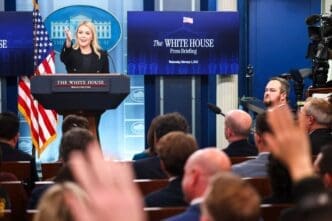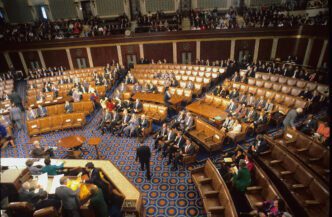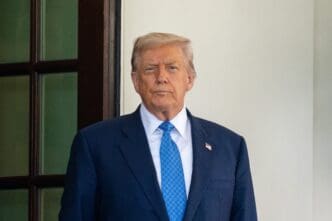Executive Summary
The Story So Far
Why This Matters
Who Thinks What?
The Trump administration has implemented new restrictions on reporters’ access to the White House press secretary’s office, a move that limits media presence in a traditionally open area. Journalists now require an appointment to enter the “Upper Press” office space, where White House press secretary Karoline Leavitt works, effective as of Friday night, November 1, 2025.
New Access Rules Implemented
The new policy marks a significant departure from decades of established practice, during which the area was readily accessible to White House correspondents. This unrestricted access traditionally facilitated a direct flow of information between the administration and the press, aiding in timely newsgathering, particularly during breaking events.
The White House cited security concerns as the reason for the clampdown. A memo issued by the administration stated that the policy “will ensure adherence to best practices pertaining to access to sensitive material.”
Press Corps Opposition
The White House Correspondents’ Association (WHCA) has voiced strong opposition to the new restrictions. The association, representing hundreds of credentialed reporters, stated it “unequivocally opposes any effort” to limit journalists from areas historically used for newsgathering, including the press secretary’s office.
According to the WHCA, these new rules “hinder the press corps’ ability to question officials, ensure transparency, and hold the government accountable, to the detriment of the American public.” CNN’s Jeff Zeleny noted that reporters often “wait in the hall” by the press secretary’s office to seek information from communications aides, a practice that will now be curtailed.
Under the new policy, reporters will only have access to a smaller set of offices belonging to junior advisers and press secretaries. White House communications director Steven Cheung’s office is also now off-limits.
Cheung asserted in a social media post that “some reporters have been caught” taking pictures of sensitive information and “eavesdropping on private, closed-door meetings.” However, leaders within the White House press corps have indicated they are unaware of any colleagues being “caught” in such activities.
Pattern of Restricted Media Access
This latest restriction is part of a broader trend by the Trump administration to control and limit traditional media access. During his second term, President Trump and his aides have taken several steps to stymie news coverage and bypass established media outlets.
Previously, the administration blocked the Associated Press from attending certain White House events, leading to an ongoing First Amendment lawsuit. The administration has also ceased publishing transcripts of President Trump’s remarks, taken control of daily press pool assignments, and invited commentators favorable to Trump to presidential Q&As.
The approach to media access has extended beyond the White House. Last month, Defense Secretary Pete Hegseth implemented severe new restrictions for Pentagon press pass credentialing. These rules were largely rejected by major media outlets, leading many to forgo access to the Pentagon complex.
A similar attempt to bar journalists from the “upper press” area occurred early in Bill Clinton’s presidency, which was met with outcry and subsequently rescinded. Journalists maintained normal access to these offices during Trump’s first term in office.
Ongoing Tension
The restriction on access to the White House press secretary’s office underscores the ongoing tension between the Trump administration and the press. The administration’s stated security concerns are met with significant opposition from media organizations, who argue that such measures impede their ability to inform the public and hold the government accountable.








